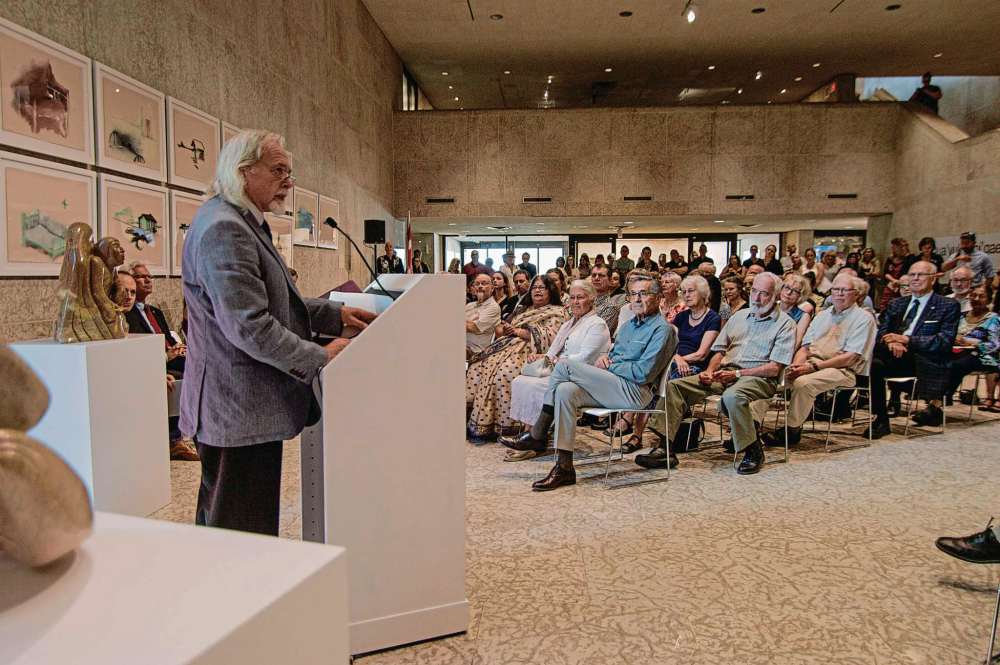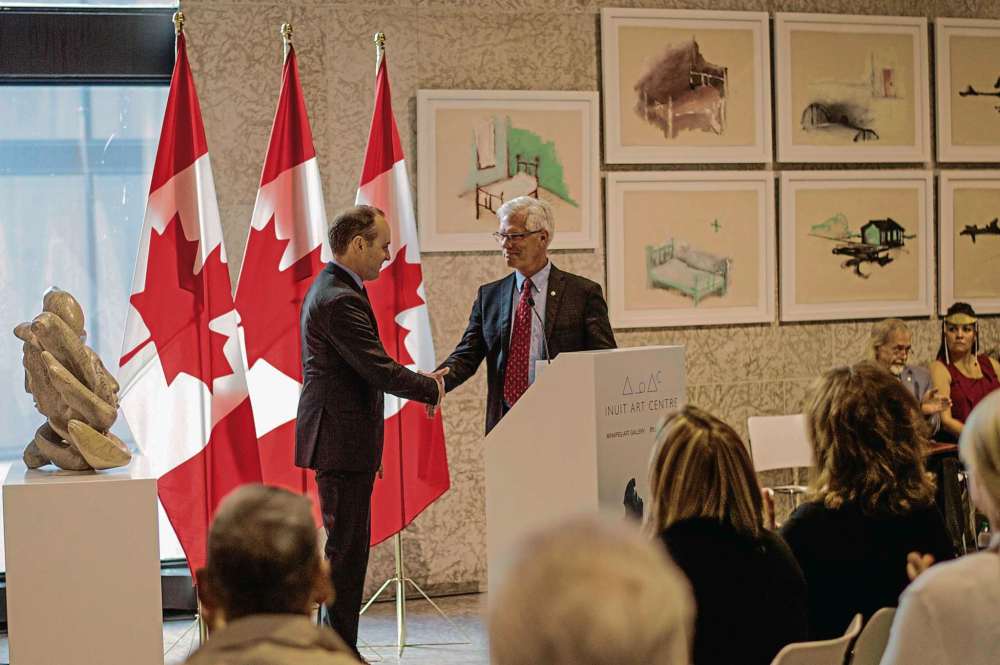Inuit Art Centre approximately half funded
Federal investment pushes WAG project forward
Advertisement
Hey there, time traveller!
This article was published 05/08/2016 (3363 days ago), so information in it may no longer be current.
The Winnipeg Art Galley’s Inuit Art Centre project has taken a substantial step forward with a federal investment of $15 million.
Minister of Natural Resources Jim Carr made the announcement at the WAG on Aug. 2 which he claimed is part of the federal government’s plan to invest in the country’s cultural institutions.
“This demonstrates how important we consider places where Canadians experience art, preserve our past and celebrate the many cultures that make our country so rich and diverse,” Carr said. He noted other investments in the CBC and the Canada Council for the Arts.

“The centre will bring the wonders of the north to the south and allow visitors to learn more about this majestic and magnificent part of Canada, its people, its culture and its history,” Carr said.
“Thank you for your game-changing commitment to this game-changing project,” WAG CEO and director Stephen Borys said.
The fundraising goal for the centre is $65 million. In addition to the $15 million provided by the federal government, the City of Winnipeg has committed $5 million over five years. The WAG has also submitted a request for $15 million from the Province of Manitoba. The private sector goal is $30 million, of which WAG media manager Catherine Maksymiuk says “about half” has been raised.
“Support to date has been very positive,” Maksymiuk wrote in an email.
WAG board member and president of the Manitoba Inuit Association Fred Ford spoke from his experiences in helping his father operate an art gallery on Baker Lake.

“(My father) was a stone carver and my brothers and I helped him start a gallery in the early ’80s,” Ford said. “We worked with artists in the community and beyond, and we know the value of having an extra partner like the WAG and we appreciate all that is being done to champion our art and our artists, culture and history around the world.
“Being able to tell our own stories in our own way about colonization, relocation and residential schools is in itself, an act of reconciliation.”




